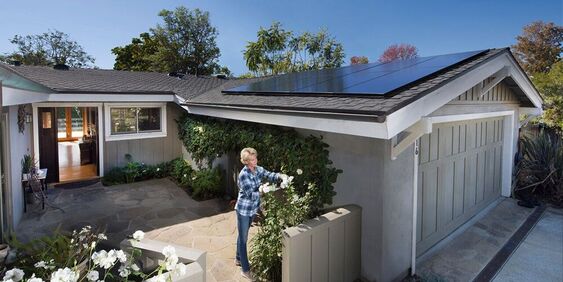|
While searching for inspiration for this Earth Day blog post the more I read, the more depressed I became. I read so many articles of mass decline of species, of increasing atmospheric greenhouse gases, of the deforestation of the Amazon, of increasing devastation resulting from a warming climate, of the destruction of the world's coral reefs, but that is not the story I want to share today.
I want to share a story of hope and celebration. I find that hope in the beauty of our incredible life giving planet that gave birth to each of us and to everyone we ever have and ever will know. I find that hope in selfless acts of kindness. I find hope in reflecting on how this accumulation of stardust has evolved into the Himalayan mountains reaching to over 29,000 feet high, the enormity of the 63 million square miles of pacific ocean, a 106 acre grove of aspen trees functioning as one living organism, human civilization, our ability to connect with people face to face on all corners of the earth at a click of a button, of technology that allows us to turn sunlight into electricity and the simplicity, yet awe-inspiring complexity of a beating heart that powers pumps our lungs which pulls oxygen from the air that was fed by breathing trees and gives us each and every breath of our entire lives. Life on Earth is an awe-inspiring and beautiful miracle and we are so fortunate to experience it. I’m grateful to be sharing this trip through space with you on this spec of cosmic dust, our home, our life giving planet earth. I hope you will join me today, this Earth Day in celebrating our home, this planet Earth and I thank you for walking this road with me in helping to preserve this earth for ours and all future generations. I’ll leave you with a few words from Carl Sagan on our “pale blue dot”. “On it everyone you love, everyone you know, everyone you ever heard of, every human being who ever was, lived out their lives. The aggregate of our joy and suffering, thousands of confident religions, ideologies, and economic doctrines, every hunter and forager, every hero and coward, every creator and destroyer of civilization, every king and peasant, every young couple in love, every mother and father, hopeful child, inventor and explorer, every teacher of morals, every corrupt politician, every "superstar," every "supreme leader," every saint and sinner in the history of our species lived there--on a mote of dust suspended in a sunbeam.” “The Earth is a very small stage in a vast cosmic arena.” “It has been said that astronomy is a humbling and character-building experience. There is perhaps no better demonstration of the folly of human conceits than this distant image of our tiny world. To me, it underscores our responsibility to deal more kindly with one another, and to preserve and cherish the pale blue dot, the only home we've ever known.” — Carl Sagan, Pale Blue Dot, 1994
1 Comment
Monday, March 15th marked the beginning of deliberations in the California Public Utilities Commission over California's solar Net Metering rules. Net Metering is the program that allows California home and business owners with rooftop solar to sell their excess power during the day to the utility companies. This program is the most important component to ensuring the viability of residential and commercial solar. The program was created in 1995 and was modified in 2016 when the CPUC passed what has been called NEM 2.0. Part of the NEM 2.0 decision included the commission agreeing to keep credits tied to retail rates, rather than the less expensive wholesale rates, providing a big win for backers of solar. This component is likely to change.
Now, five years later, the CPUC plans to implement a further update to the program, NEM 3.0. The big three investor-owned utilities — San Diego Gas & Electric, Southern California Edison and Pacific Gas & Electric — turned in a joint proposal that looks to resolve their complaints that net energy metering results in a “cost-shift” that unfairly burdens customers who do not have solar installations at their homes and businesses. The joint proposal submitted by the three utility companies calls for changes that would affect only new solar customers, not existing net metering customers. Below are the top three proposals from the state’s investor-owner utilities:
Needless to say, if the utilities companies get everything they want, this will largely end rooftop solar in California. They won’t get everything they want. The CPUC won’t allow for policies that will completely dismantle an enormous industry. They will however make changes that will lead to solar being less cost effective than it currently is. If you’re reading this article and NEM 3.0 has not yet gone into effect and you still don’t have solar, it’s time to act fast. You don’t want to miss out on NEM 2.0. Fill out our form below to get a free quote and find out how much you can save with $0 down. Whenever I see a big spike in an electric bill in the winter time I know the culprit is most likely a space heater. I have this conversation with a lot of my customers who are of the belief that heating with a space heater is more efficient because it's more targeted. There is some truth to that, but there's a couple other important considerations in addition to that such as the cost per therm (natural gas) and the cost per kWh of electricity.
To make a long story short, heating with electricity versus heating with gas is far more expensive. The University of Maine did an interesting study where in they determined the cost to generate a million BTUs with different kinds of fuel, at a wide range of prices and using differing heating element that. When heating with a gas furnace operating with a 75% efficiency rating and the cost per therm is $1.50 (which is on the high end for California) they found it costed $18 to generate a million BTUs When heating with electricity even with a unit that is 100% efficient, and at $0.20 per kWh they found it costed $58 to generate a million BTUs. The cost of electricity in California can range from $.18 to $0.45 per kWh and average around $0.25/kWh. Heating with electricity costs more than twice as much as gas to generate a million BTUs. What about heating with solar generated electricity? Solar electricity when financed with $0 down is around $0.15/kWh give or take 5 cents depending on the roof, shade, system size and type of financing. That means even if your running a space heater on solar, it will still cost more than heating with gas. The only variable we haven't addressed yet is the amount of space that's being heated. If you are heating 300 square feet with a space heater and not heating an entire 3,000 square foot house, in that case if will costs less to heat with a space heater. And in that case you better have solar! Seriously though, if you're still paying the full price of your utility's power it's time to reconsider solar. If you're with SCE, SDG&E or PG&E, you're likely paying an average of $0.25 - $0.35/kWh. $0 down solar runs around half that cost of utility on a monthly basis. Find out how much you can save and book a call today with an energy expert. A Power Purchase Agreement or PPA is a financing arrangement that was created solely for the solar industry and is one of the most common ways solar is financed. In a PPA the home owner or business owners agrees to buy all the power that their solar panels produce. There's no material or labor cost. No maintenance cost. The customer simply pays for the power. The solar company owns the system and therefor is completely responsible for any upkeep of the system and ensuring a guaranteed level of production. The biggest benefit of a PPA versus staying with the utility is that with a solar PPA the homeowner can usually get a price for their power that's substantially less than what they pay their utility. In addition to that they also have the option to get a fixed price for their solar power that will never increase. The benefits of a Power Purchase Agreement (PPA) versus a solar loan are that the solar system is insured and the power output is guaranteed. While all systems come with 25 year warrantees on panels, there can sometimes be a gap in coverage for instance if there is damage from a natural disaster such as an earthquake or if you have a 25 year manufacturer warranty, but only have a 10 year labor warranty. Additionally the Power Purchase Agreement is usually transferred from one homeowner to the next when a house is sold. This reduces the risk the homeowner may bare of having to pay off a loan when they sell their home. Power Purchase Agreements are most attractive to the following set of people.
What is the difference between a PPA and a lease? There's one technical difference and one very concrete difference. The technical difference is that with a lease you're paying for the equipment whereas with a PPA you're paying for the power. The biggest difference in how it affects you, the buyer is that with a PPA you have the option to purchase the system whereas with a lease you do not. For that reason I recommend a PPA over a lease. Whether you finance your solar with a loan a lease or a PPA, the most important thing is to understand your options and make sure you're making the decision that best suites your needs. Speak with an IndieSolar expert today to find out what makes the most amount of sense for you. |
AuthorMatthew's been selling and designing residential solar since 2009. Archives
April 2021
Categories |
Indie Solar Consulting




 RSS Feed
RSS Feed
